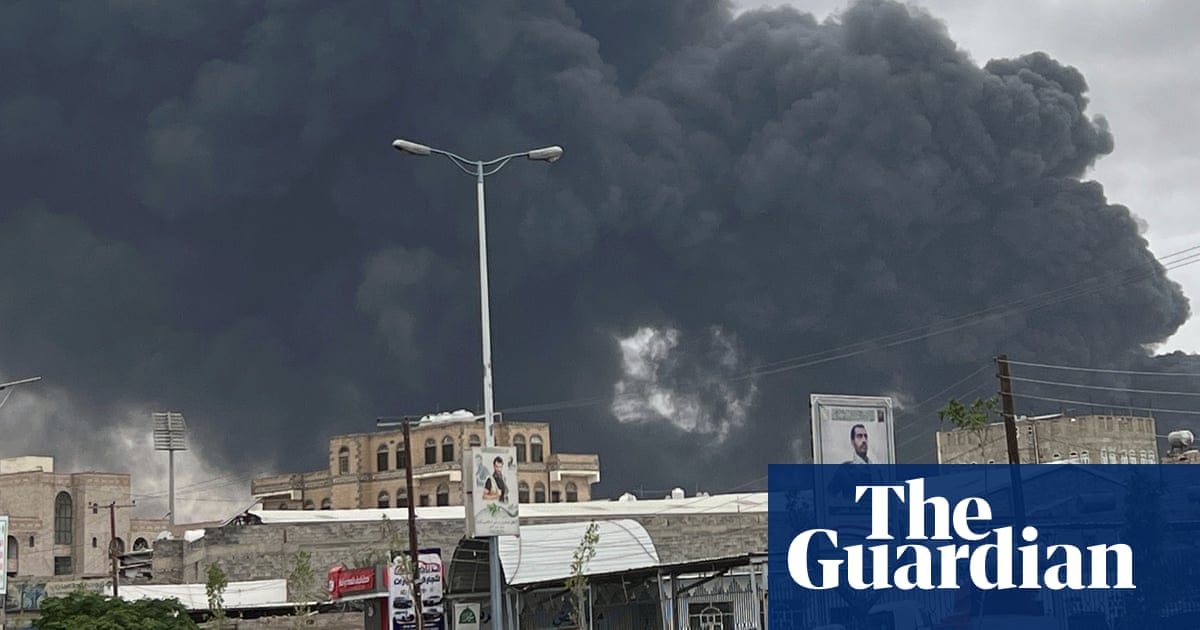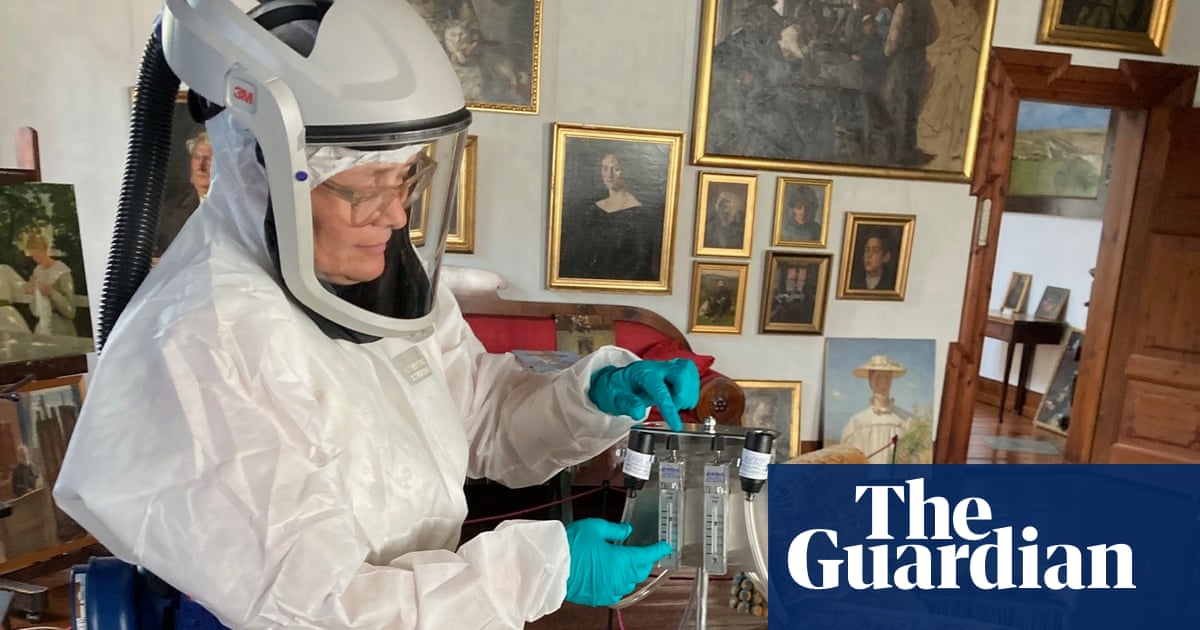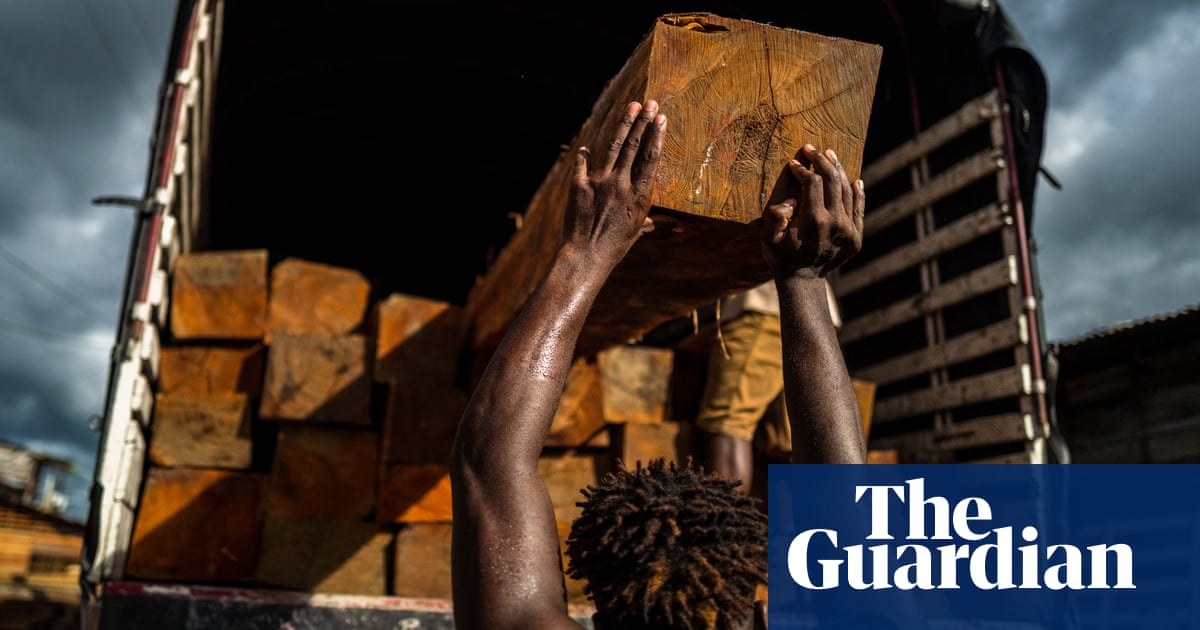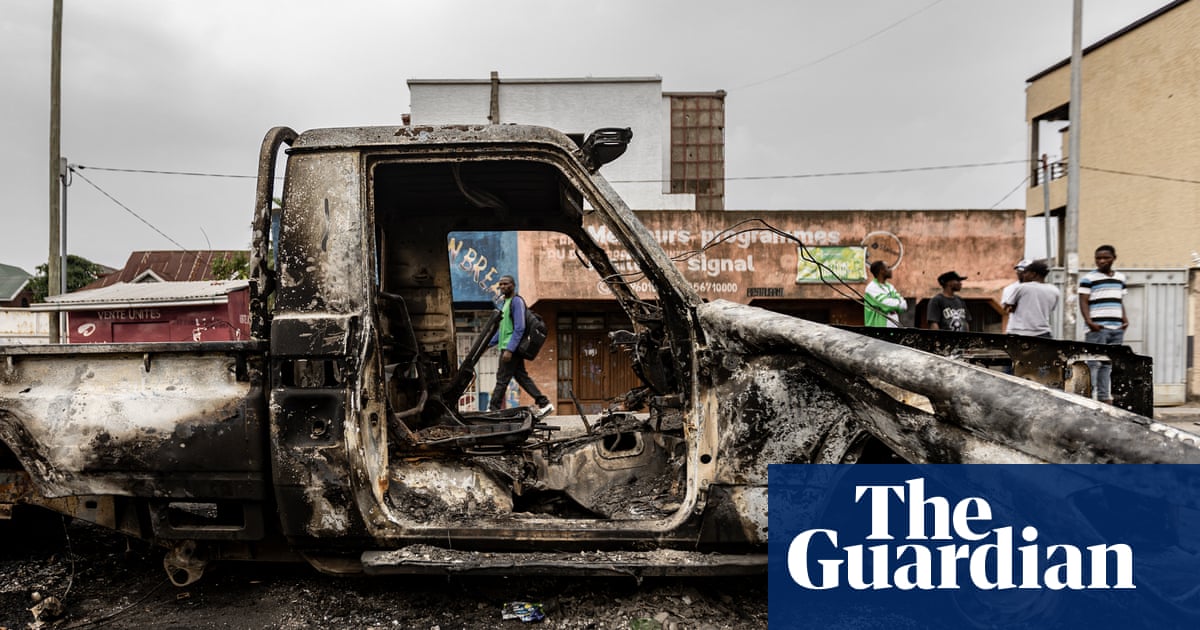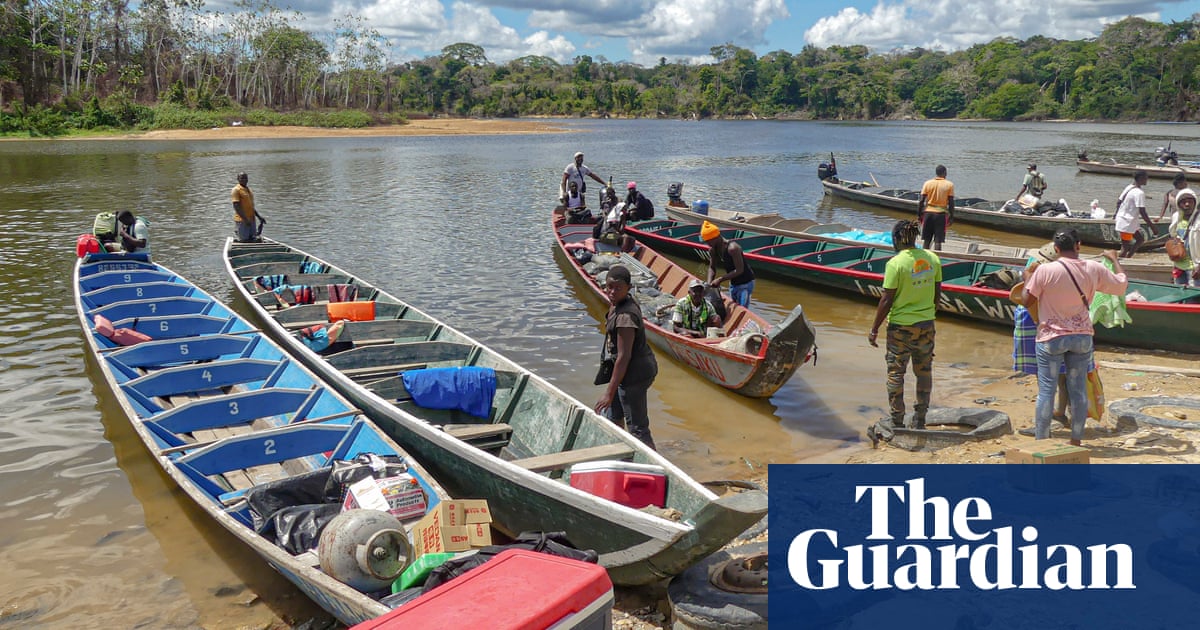For decades, archaeologists have believed that human occupation of the Amazon basin was far older, vaster and more urbanised than the textbooks suggested. But hard evidence was scant, artefacts were scattered, and there were too few people on the ground to fully assess the magnitude of what lay cached in the dense forest. Then they found a shortcut – lidar.
Lidar (light detection and ranging) scans use pulses of light to create a 3D map of terrain in a fraction of the time it would take to survey from the ground. One of those making the most of the technology is a team of experts led by Vinícius Peripato, an analyst with the Brazilian National Institute for Space Research.
By combining lidar datasets, they are discovering traces of a lost world: evidence that between 10,000 and 24,000 pre-Columbian “earthworks” exist across the Amazon River basin.
While the remote scans still need to be verified on-site, Peripato says the findings so far make a compelling case that ancestral Amazonians systematically built up large urban centres and engineered the habitat to their needs and appetites with composted gardens, fisheries, and forests groomed into orchards in complex, sustainably run systems – which could offer lessons for modern cities.

The discovery challenges historical ideas of a pristine jungle too harsh to sustain human occupation. “It’s really incredible. Our research ended up guiding the course of several others, and not just in archaeology,” says Peripato, who is also collaborating on another project, Mapping the Archaeological Pre-Columbian Heritage of South America.
“Ecologists have been trying to understand the differences between forests that have been domesticated and virgin forests. I’m a geographer, and over time I’ve had to delve into archaeology and historical ecology to understand this pre-Columbian dynamic in the Amazon.”
By the time Old World caravels dropped anchor off what would come to be known as South America, the habitat that Europeans had imagined to be a green blank page was in fact a hive of urban life. The chronicles of Gaspar de Carvajal, the 16th-century Dominican friar who accompanied the expeditionary journeys of the Spanish explorer Francisco de Orellana from the Andes to the Amazon in 1541, already described elements of this built environment.
Instead of isolated Indigenous tribes, Carvajal revelled in the teeming settlements spread along riverbanks. These were no mere jungle villages but cities with “throngs of Indians” so numerous and densely packed that “were a pin to drop from the sky, it would land on the head of an ‘Indian’, never falling to the ground”. He also described the Spanish explorers being frightened by such grandiose engineering work.
Even allowing for colonial hype, Carvajal was on to something. But waves of colonial occupiers, bearing guns, pathogens and the Bible, made short work of these ancient Amazonians, whose populations soon collapsed and with them, their towns.

By deploying remote sensing for archaeology, scans for radiocarbon dating, soil chemistry and phytolith analysis (the study of microscopic mineral deposits in ancient plant remains), multidisciplinary teams of scientists have been detecting traces of Amazon basin cities far older, larger, more populous – and more sustainably run – than anyone had imagined.
The gadget of choice is lidar. This sampling device, mounted on aircraft or drones, beams down more than a million pulses of laser a second and measures the time it takes the rays to bounce back. Analysts use the data to reconstruct a minutely detailed virtual landscape picture, then digitally “deforest” the vegetation to expose the structures below.
Archaeologists had previously used lidar to find ancient Maya cities in Central America. The South American rainforest is mostly devoid of stone and scientists previously had to piece together scraps of evidence of lost Amazonian cities built from clay, thatch, wood and hides – perishable materials that had long since vanished. The newly excavated sites in the Amazon are now regarded as comparable to Maya urban systems in Mexico and Guatemala, though only the limestone structures of the latter have been preserved, unlike the earthworks of the Amazon.
Peripato says lidar has revolutionised the academic field. “The Amazon forest is continental in scale. Even if we had generous budgets, it would take years and an extensive workforce to survey the river basin from the ground up,” he says. “With remote-sensing tools, you can scan vast areas and see structures hidden below the trees and soil.”
Using statistical modelling, researchers estimate that more than 10,000 and perhaps as many 24,000 earthworks may still be hidden beneath the Amazon rainforest.

Much of the early 21st-century spadework fell to the University of Florida anthropologist Michael Heckenberger, whose three decades of excavations centred on the ancient fortified town of Kuhikugu on Brazil’s Upper Xingu River revealed a surprisingly intricate network of “low-density garden cities”, dating from at least 1,500 years ago, replete with homes and gardens, broad roads, central plazas, a palatial dwelling fit for a chief, with a log palisade and defensive ditches surrounding it, as well as orchards and managed forest on the outside. Each city may have harboured thousands of residents.
Then came word from Llanos de Mojos, in the south-west Bolivian Amazon. In 2022, the archaeologist Carla Jaimes Betancourt from Bonn University and colleagues unveiled the contours of monumental settlements up to 1,400 years old. With intricate geometrically patterned structures, roads radiating out, rings of moats and ramparts, the site had terraces and pyramid-like 21-metre-high cones.
Last year, researchers led by Stéphen Rostain, of the French National Centre for Scientific Research (CNRS), announced that they had uncovered evidence of an even more spectacular find in Ecuador’s Upano Valley: vestiges of a 2,000-year-old gardened metropolis with more than 6,000 earthen platforms in a geometric pattern connected by public squares and a skein of roads connecting 15 separate urban centres, which may have had tens of thousands of inhabitants.
“The Upano Valley was home to genuine urban settlements in the middle of the tropical forest that were densely populated and laid out in a grid pattern,” Rostain told the CNRS website. He was struck by the “incredibly complex network of streets, paths leading to rivers”, as well as a web of primary and secondary roads.
“A network of this kind requires real planning,” he notes, “showing that the various settlements in the valley were contemporary.”
after newsletter promotion

These lost rainforest cities may seem to have little in common with today’s steel and asphalt behemoths but according to experts, early Amazonian metropolises are remarkable for what they tell us about the way ancestral urbanites lived off the land without trampling it. The new scientific tools have helped to uncover a pre-colonial landscape marked by ancient practices with implications for contemporary environmental management.
While the urban gardeners of Ecuador’s Upano Valley were blessed with rich, volcanic topsoils, most early Amazonians were not so lucky. By systematically composting scraps of food and organic waste, they created vast swaths of fertile “dark earth”, or terra preta, covering a 154,000 sq km (33,000 sq mile) stretch of the nutrient-poor soils of the Amazon basin nearly twice the size of Ireland – a circular economy before the phrase existed.

Dark earths have also turned up in recent surveys of the Bolivian Amazon, near the Brazilian border. The town of Versalles, for instance, sits on what scientists also call “black gold” – fertile human-enhanced soil, or anthrosols, which helped support sizeable populations on otherwise poor clay, silty or sandy land.
This method of soil engineering was so effective that several contemporary bioeconomy companies have begun manufacturing similar dark soils – also known as biochar from the partially burnt wood, charcoal and ash it contains – to enhance fertility in the Amazon basin and store carbon.
The emerging scientific consensus is that human enhancement of the habitat was routine in the early settlement of the rainforest. Recent research shows that stands of the most prized species of fruit trees flourish in the forest today precisely because they were selected and domesticated. Those precocious gardeners knew something about sustainable development, even in the largest and most complex communities.
For Eduardo Neves, of the University of São Paulo, these ancient methods can inform modern practices. “It’s not that archaeology will save the planet – the solution is not to wind back the clock 2,000 or 3,000 years.” But he says: “We need to learn from, and incorporate, historical knowledge and practices developed by Amazonians millennia ago.”
The ancient inhabitants of South America also knew about keeping the forest resilient through extreme weather. After wildfires swept drought-stricken Amazonian rainforest in the late 2010s, Brazilian authorities contacted their counterparts in Australia, a nation long inured to chronic burnings. The visiting Australian firefighters not only inspected the vulnerable South American forests; they also made a point of poring over the archaeological record.


Around the middle of the 13th century, the Amazon basin experienced what climate scientists describe as the worst drought in 5,000 years.
“We showed them evidence of large towns girded by wide roads, a perimeter of ditches, and human-made firebreaks,” says Heckenberger. “The Australians told us they’d do today exactly as the ancient Amazonians did millennia ago.”
Neves goes further. “We can safely say that biodiversity in the Amazon only exists because, and not in spite, of its inhabitants, who safeguarded their environment by transforming it,” he says. “The future of the Amazon lies in understanding its past.”
-
This story was produced with support from the Rainforest Journalism Fund in partnership with the Pulitzer Center

 2 months ago
61
2 months ago
61





